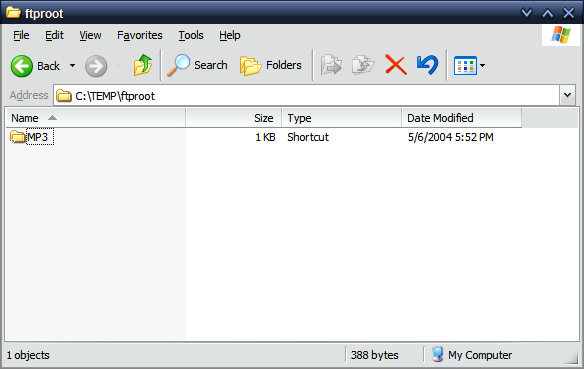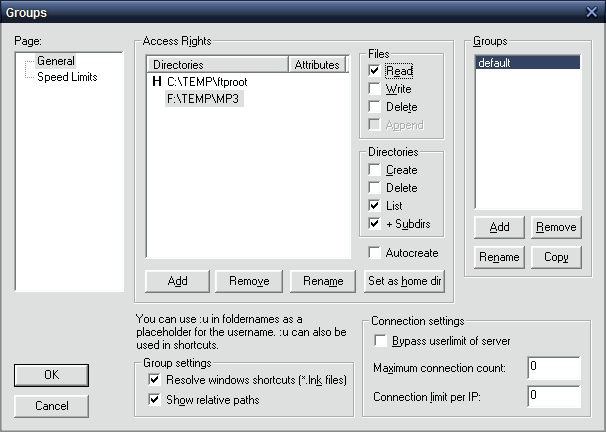One shortcut works, but another doesn't
Posted: 2004-04-21 12:54
Hi there, I've got a strange problem with Filezilla server. I've gone through the some of the posts regarding the use of .LNK files.
I have a folder called d:/ftp which I make into the home folder in FileZilla Server user settings. Then I create a shortcut to d:/folderX and put it into d:/ftp. I make sure that I give it all the permissions in the filezilla server user settings. Works fine. The client gets a shortcut to c:/folderX which is fully functional.
Then I do the exact same thing for c:/folderY (note the different partition of my hard drive that i am linking to). Again, I give the user all the permissions to that folder. But this time, the ftp client just doesn't show the shortcut.
Naturally, I've checked off "resolve windows shortcuts", and since I am able to successfully create a shortcut for one folder, I can't figure out why I can't create a shortcut to the other folder. Is this a an issue with different drive letters? (i.e. c: vs. d: ). Does the "Home Folder" need to be in the same drive as the shortcuts that it is pointing to?
Thanks for any help you can provide.
I have a folder called d:/ftp which I make into the home folder in FileZilla Server user settings. Then I create a shortcut to d:/folderX and put it into d:/ftp. I make sure that I give it all the permissions in the filezilla server user settings. Works fine. The client gets a shortcut to c:/folderX which is fully functional.
Then I do the exact same thing for c:/folderY (note the different partition of my hard drive that i am linking to). Again, I give the user all the permissions to that folder. But this time, the ftp client just doesn't show the shortcut.
Naturally, I've checked off "resolve windows shortcuts", and since I am able to successfully create a shortcut for one folder, I can't figure out why I can't create a shortcut to the other folder. Is this a an issue with different drive letters? (i.e. c: vs. d: ). Does the "Home Folder" need to be in the same drive as the shortcuts that it is pointing to?
Thanks for any help you can provide.

